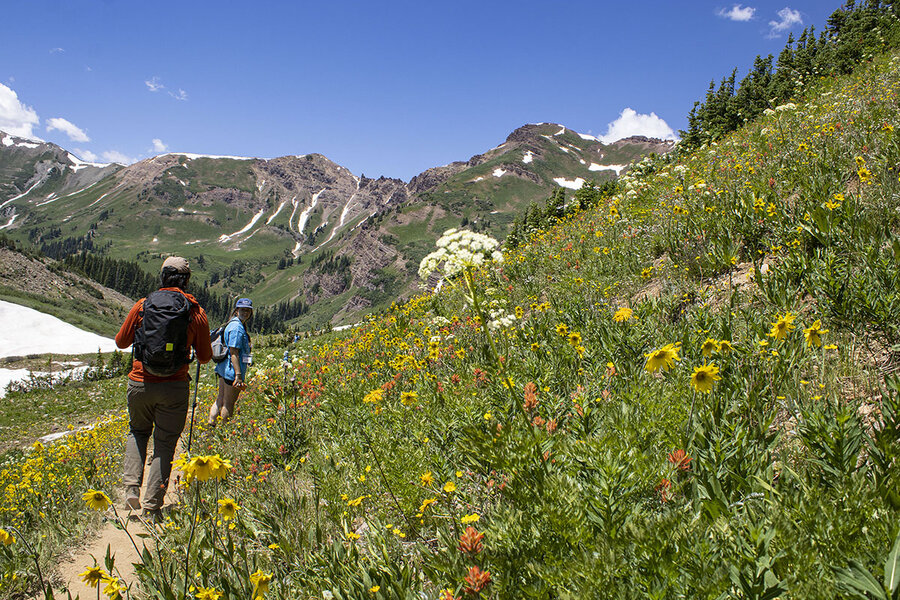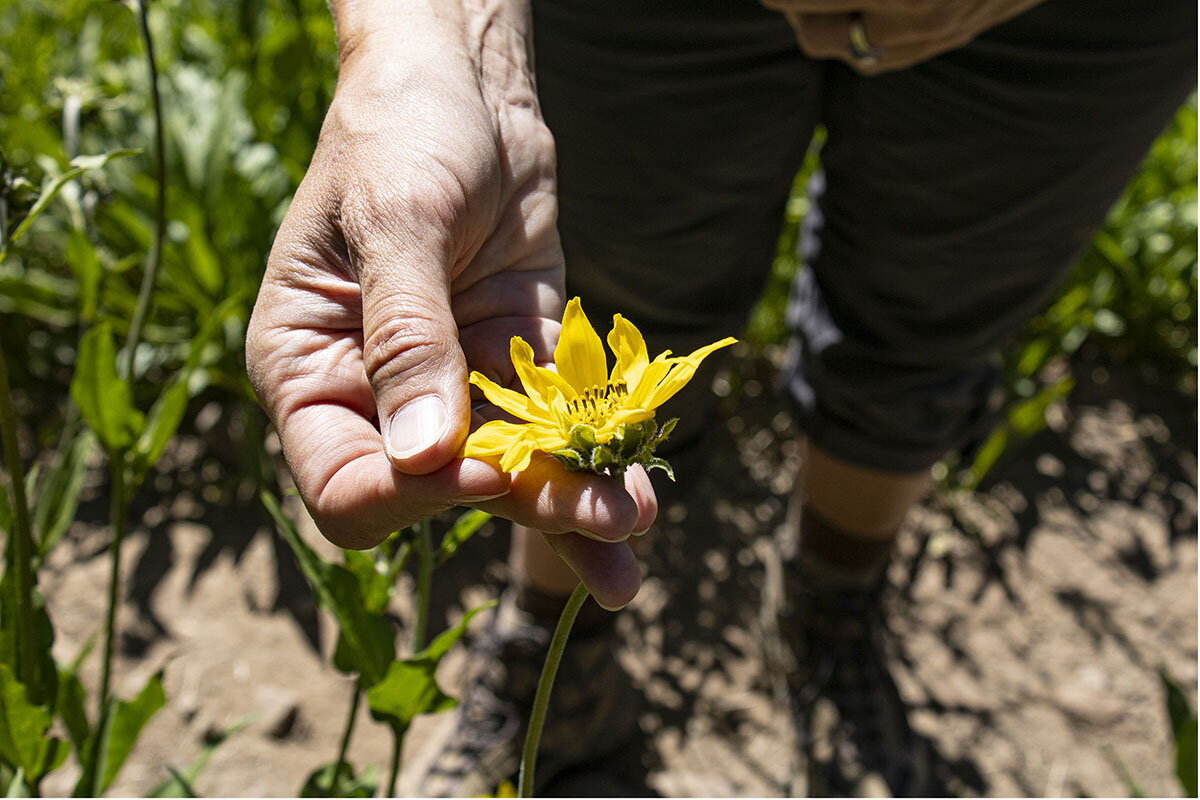‘Spectacular’ wildflower season blooms in Colorado
Loading...
| GUNNISON NATIONAL FOREST, COLO.
The siren songs of wildflowers come in blue and orange and red. Electricity runs through roots, it seems, to light each neon face.
A year of hearty snow in Colorado has meant a stunning wildflower season, feted by a mountain festival in the town of Crested Butte – known as the state’s “wildflower capital.” Many events are held in federally protected wilderness meant for the masses to enjoy. But admiring backcountry blooms, upon which pollinators rely, calls for an outdoor ethic of restraint.
“If you preserve the wildflowers, you’re helping to preserve the ecosystem,” says Jeff Delaney, guiding hikers through a winding meadow trail. Mr. Delaney is the vice president of the Crested Butte Wildflower Festival Board of Directors. “We have to behave ourselves here.”
Why We Wrote This
A story focused onAfter a two-decade megadrought in the American West, an especially wet water year has produced a stunning wildflower show on the Western Slope of Colorado’s Rocky Mountains.
Behaving means no picking. No cutting, no trampling.
“And if you see someone doing this, please give them a friendly reminder not to, and ask them to pass it along to others,” says the festival website. As doily-white oshá rise waist high, hikers avoid causing harm by sticking to the trail. So do their panting dogs, bellies wet from crossing creeks.
The annual July festival, begun in 1986, secures permits with the U.S. Forest Service to lead events on public land, including photography workshops and hikes.
On a recent weekend, Mr. Delaney leads an 8-mile excursion of a half-dozen hikers through Gunnison National Forest. With the patience of a kids coach, which he has been, he explains the geology behind the rugged peaks (millions of years old!) and points out the soft soil underfoot. That Mancos Shale is a nutrient-rich wildflower food. (It also dusts up in the dry heat, tickling the nose.)
“Botanizing” plants along the way – identifying species by guidebook, app, or naked eye – resembles celebrity sightings. Bluebells, sneezeweed, and columbine stop the hikers in their tracks.
“I think the lupines are my favorite,” says Emma Montgomery, a hike assistant, talking about the stately purple cones.
As a rising college senior, she’s around the age of a two-decade megadrought parching the American West. An especially wet water year has brought short-term relief, experts say, but far from full recovery.
Above-normal snow in Colorado, however, has meant an abundance of wildflowers in lower elevations. And in higher elevations, where snow continues to melt, peak wildflower season has been delayed a couple weeks to late July or early August, says Ian Breckheimer, a landscape ecologist at Rocky Mountain Biological Laboratory.
“This is a spectacular wildflower season on the Western Slope,” says Dr. Breckheimer.
He works in nearby Gothic – a former silver-mining town turned ghost town. It’s also home to the laboratory, a world-renowned field station. In the surrounding wilderness, he and colleagues study changes to plant and animal life over time and under climate change.
Take the delicate glacier lily, found on the hike at around 11,000 feet where splotches of snow remain.
“As soon as the snow melts, these guys come out,” Mr. Delaney, the guide, explains.
Yet as climate change leads to earlier springs, the glacier lily has recently been flowering an average 17 days earlier in research plots than it did in the 1970s, says Brian Inouye, a principal investigator at the lab. That makes the canary-yellow flower a canary in a coal mine.
Stewards like Mr. Delaney offer help to nature that’s within their control, like extracting invasive, or problematic, species (seen as an acceptable excuse to pick). The day before the hike, he had plucked out a nonnative plant called a salsify, a cousin to the dandelion.
Pausing for lunch beside the trail, he opens his backpack and pulls out what looks like a tuft of fluff. The weed had gone to seed in his bag overnight – better there than on the ground.
Not everyone needs this kind of mission in the great outdoors, of course. It’s also a place to find love.
Nearby sit Megan and Nicholas Foss of Denver, who met pre-pandemic in Iceland. Solo hikers then, they’ve been companion hikers since. Traveling as a pair has been an adjustment requiring compromise, says Ms. Foss, perched on a rock beside her husband. Of course, there are perks, too.
They can’t take the wilderness with them, but they can share the view: a sun-stained valley, azure air.
“We’re going to want to come back,” she says.








